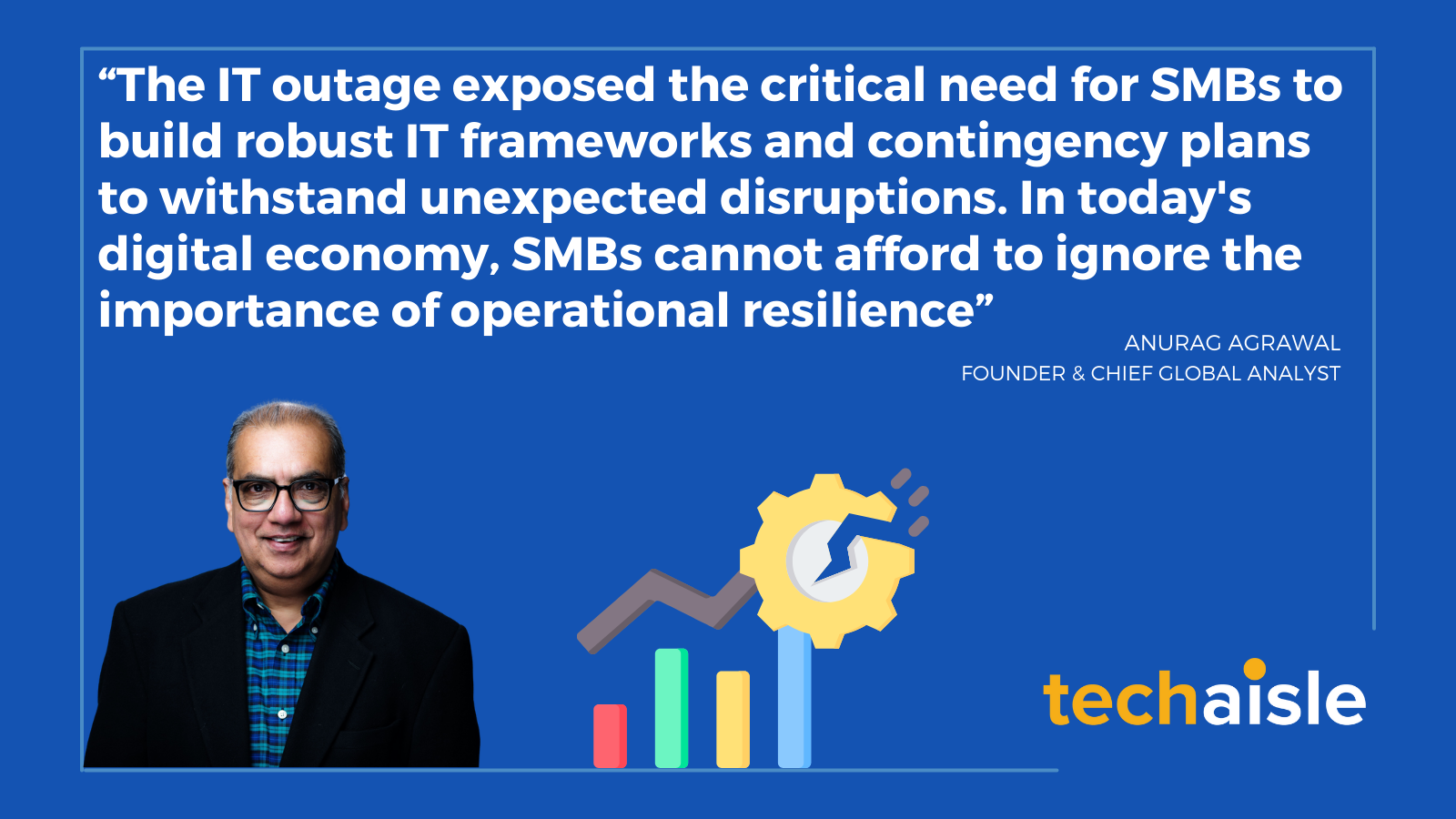A recent update from CrowdStrike caused a widespread outage, termed the largest in history. The IT outage highlighted the vulnerability of SMBs to large-scale tech outages and their dependence on third-party IT services. It also underscored the need for better preparedness and potentially more diverse IT ecosystems to mitigate such risks in the future. Cybercrime is predicted to cost $14.57 trillion globally in 2024, and it would be the world's third-largest economy after the US and China. This underlines the importance of robust cybersecurity. The incident raises a concerning question: what happens when the guardians become the source of disruption? The CrowdStrike-related outage was not caused by a cyberattack, but rather by a defect in a software update, highlighting the importance of operational resilience beyond just cybersecurity measures. Analysts estimate the global cost of this outage to be as high as $24 billion as of now.
Uneven Recovery for SMBs
A Techaisle survey of 600 small businesses indicates that 34% expect customer reputation damage and 23% anticipate significant bottom-line impacts due to operational challenges. Logistics complications from inventory management to shipment tracking caused business friction. Communication issues with clients, suppliers, and staff led to delays and missed opportunities, while financial activities like processing payments and managing invoices suffered. Some businesses also faced customer service obstacles, leading to customer dissatisfaction and reputational harm.
The recent CrowdStrike outage has highlighted the essential need for dependable tech in today’s businesses and the severe impact that short downtimes can have, especially on SMBs. It's a stark reminder of the importance of solid IT frameworks and contingency planning. Small businesses suffer disproportionally during such outages due to leaner cyber defenses and limited personnel, which are significant hurdles when crises strike. The manual resolution required here spotlighted these weaknesses. Small IT teams, typically stretched thin with various duties, found it tough to manage the fix across several devices, leading to overtime work to fix crucial operations.














